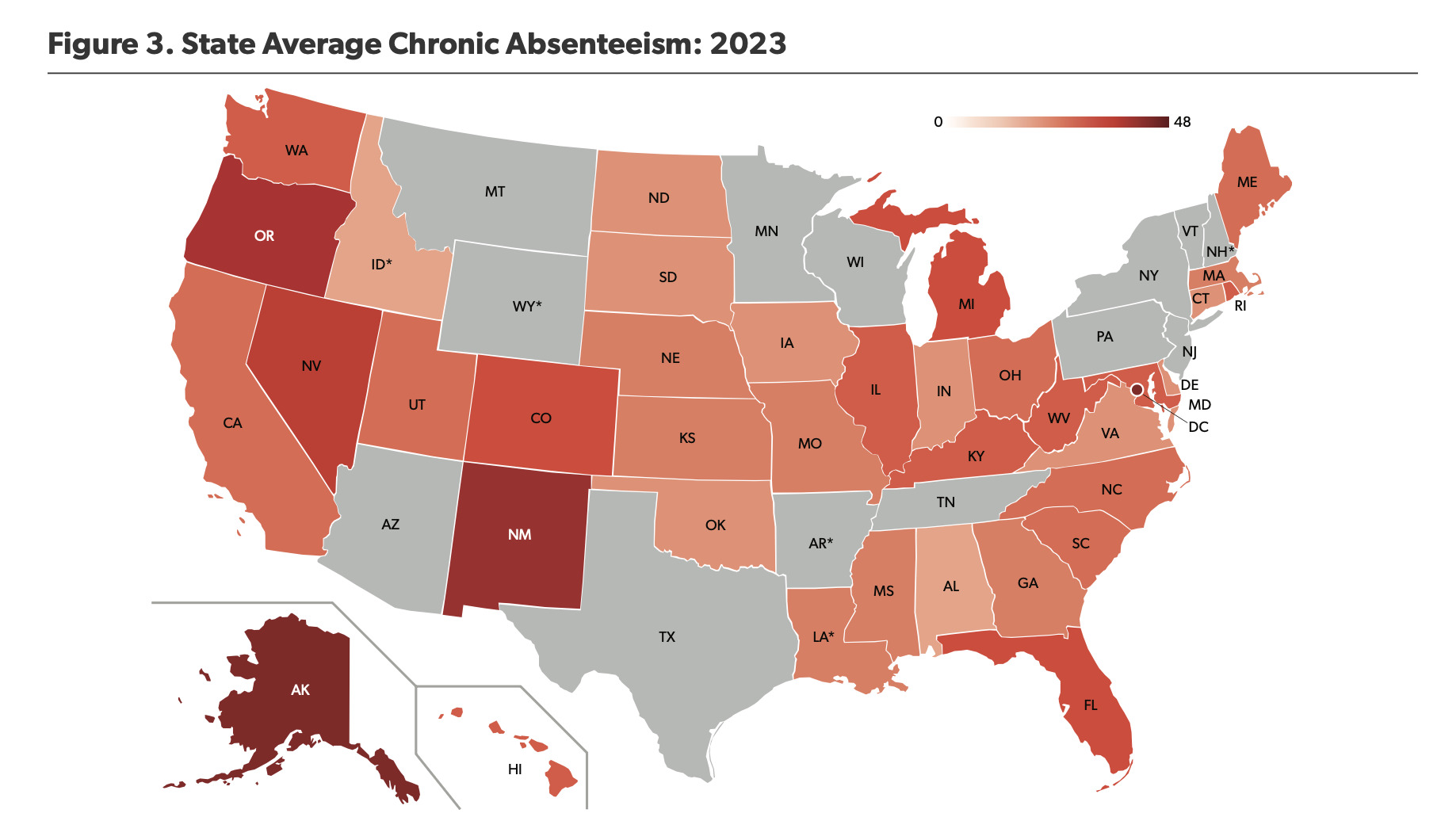Source
The American Enterprise Institute (AEI)
Summary
“This report documents chronic absenteeism over the COVID-19 pandemic. Drawing on the American Enterprise Institute’s Return to Learn Tracker Chronic Absenteeism Data Collection, the most comprehensive and current data collection on pandemic and post-pandemic chronic absenteeism, I show that pandemic increases in chronic absenteeism were widespread during the pandemic. More worrisome, using the most recent data for the 2022–23 school year, I show that even after the pandemic subsided drastically, the elevated rates of chronic absenteeism fell very little.
I find that the national average chronic absenteeism rate increased from 15 percent in 2019 to 28 percent in 2022 and remained substantially elevated in 2023. I also use district-level data to report variable rates of chronic absenteeism by district characteristics including pre-pandemic achievement, poverty, size, and the duration of remote instruction in the 2021 school year. Of particular concern, the percentage-point increases in chronic absenteeism were larger in districts and among groups that already had higher chronic absenteeism rates before the pandemic.
Given the potential for these rates of chronic absenteeism to hamper urgently needed recovery from pandemic learning loss and its negative association with school culture, chronic absenteeism is likely public schools’ greatest post-pandemic challenge.”
Read Full Report →
[Related: Schools won’t recover from COVID absenteeism crisis until at least 2030]
View Youth Today's Report Library
































